- Home
- /
- Top Stories
- /
- Revolutionizing Justice- Exploring...
Revolutionizing Justice- Exploring Kerala High Court's Innovative, Paperless E-Court System For More Accessible Justice [PART-1]
Navya Benny & Sheryl Sebastian
3 March 2023 6:51 AM
“I will tell you the problem lies when you have Chief Justices who think technology is friendly and other Chief Justices think other-way. I am going to ensure that everybody is online. There is no question of 'I like technology, I don't'. Can anyone now say I won't use cellphone? This technological infrastructure has been created using public funds. All Chief Justices of the High Courts need...
“I will tell you the problem lies when you have Chief Justices who think technology is friendly and other Chief Justices think other-way. I am going to ensure that everybody is online. There is no question of 'I like technology, I don't'. Can anyone now say I won't use cellphone? This technological infrastructure has been created using public funds. All Chief Justices of the High Courts need to learn that they have to be on board. There are no exceptions".
"Whether you are pro-technology or not, all Chief Justices of High Courts need to learn that technology is to be used."
These recent comments of Chief Justice of India DY Chandrachud, made during a hearing on plea to recognize virtual hearings as a fundamental right, drew a lot of attention from all quarters. He was expressing his disappointment with Chief Justices of High Courts who had begun dismantling virtual hearing infrastructure set up by High Courts in light of the Covid-19 pandemic. CJI Chandrachud has been a vocal supporter of integrating technology into the Indian legal system. He has time and again stressed on the significance of digitisation of the judiciary in facilitating access to justice.
CJI DY Chandrachud has been at the helm of the e-Courts project of the Supreme Court of India, which is currently in its third phase. Guided by his vision, the Kerala High Court introduced a completely automated Case Management System (CMS), with a mission to become a paperless court.
The Information and Communication Technology (ICT) initiatives are led by the Chief Justice S. Manikumar. The ICT Committee of the High Court that had been constituted to realize this vision of paperless courts comprises of Justice A. Muhamed Mustaque, Justice A.K. Jayasankaran Nambiar, Justice P.B. Sureshkumar, Justice Shaji P. Chaly, and Justice Raja Vijayaraghavan V.
CMS governs the entire process of case-flow from the filing stage until the uploading of the order on the system. In this manner, the system has tried to incorporate absolute automation, transparency, access, and interoperability. In fact, the CMS is the very first Court Management Software system in the country endowed with the ability to automatically consume the data of e-filed cases.
The system provides Dashboards for Judges, Advocates, Parties in person, Advocates’ Clerks, the Advocate General, the Central Government Counsel, and the Standing Counsel. One of the most significant aspects of this system has been the increased accessibility provided to all stakeholders.
We had the privilege to study the “paperless system” that has been implemented by the Kerala High Court, and to interact with Justice A. Muhamed Mustaque, Justice Raja Vijayaraghavan V., and the Deputy Registrar (IT) Mr. Joseph Rajesh.
Notable Features Of Case Management System
- For Advocates:
The System provides for an ‘Advocate Dashboard’ that shows the number of cases by the registered lawyer from the date of commencement of his practice, indicating their status along with orders or judgments issued, if any. The dashboard also reveals the capacity in which the lawyer had appeared in each case.
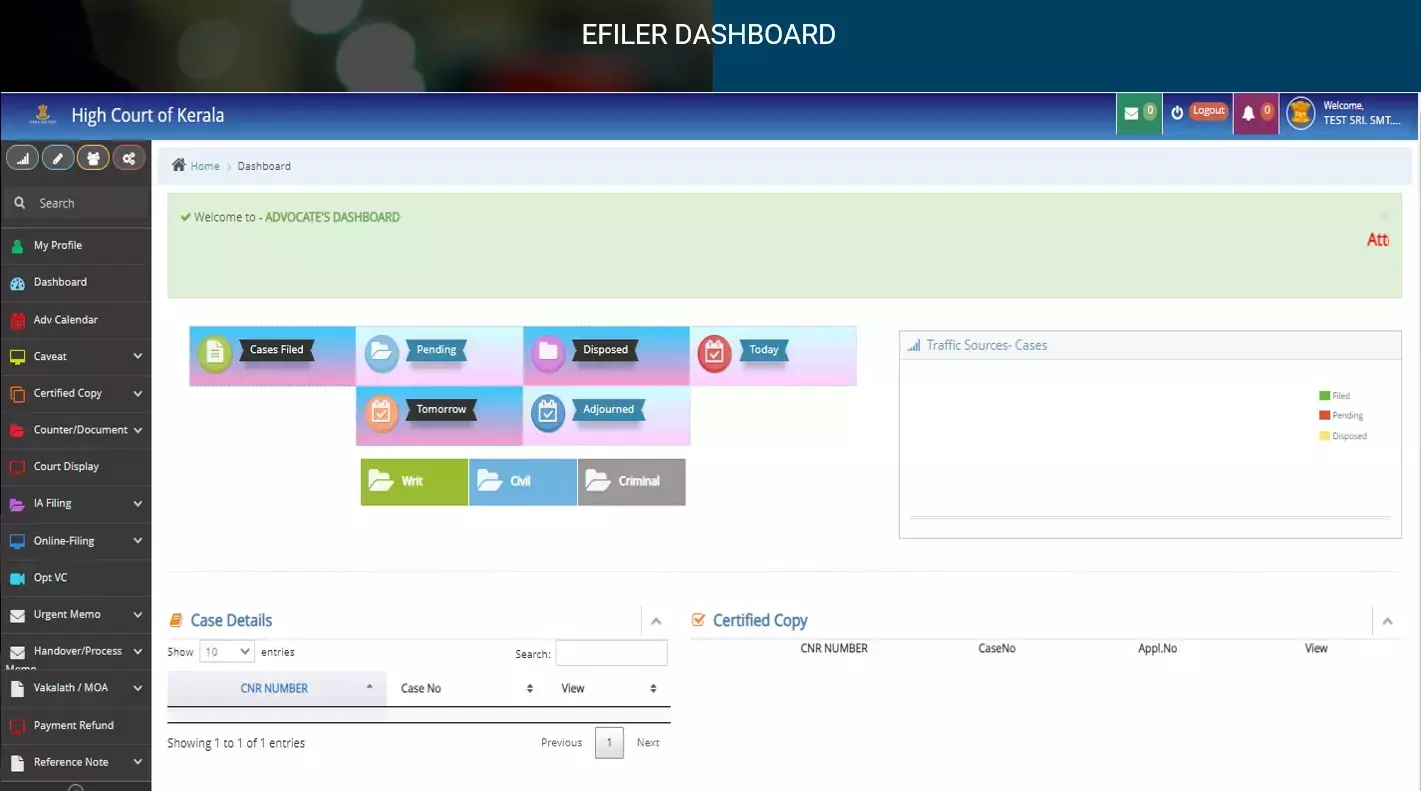
The Advocates’ Calendar indicates the number of cases of theirs that have been listed on a particular day, enabling them to plan their schedule in advance.
In its pursuit of going paperless, the High Court has also made e-filing/ electronic filing of legal papers mandatory since January 1, 2022. What this implies is that cases can be filed and documents can be uploaded on the electronic platform, thereby saving time as well as cost in the process.
The platform enables lawyers to file fresh caveats, counter-affidavits, objections, interlocutory applications, urgent memos, vakalath, and apply for certified copies of orders and judgments which would be sent to their registered email ID as well as on the dashboard. In fact, the caveat filing is one of the novel features of Kerala High Court in the sense that it is the only High Court where the caveat is auto numbered. Whenever a case is registered, the system would check whether any existing caveat is available in the database, and if so, it would tag the same to the case and the information would be displayed in the causelist.
An Advocate simply has to register himself with the Bar Council ID in order to file cases. Parties in person can also resort to e-filing, in which they can use government IDs to register in a one-time manner.
Apart from normal e-filing, the platform also provides for quick e-filing, which has simplified the process of filing, and condensed it to just four simple steps.
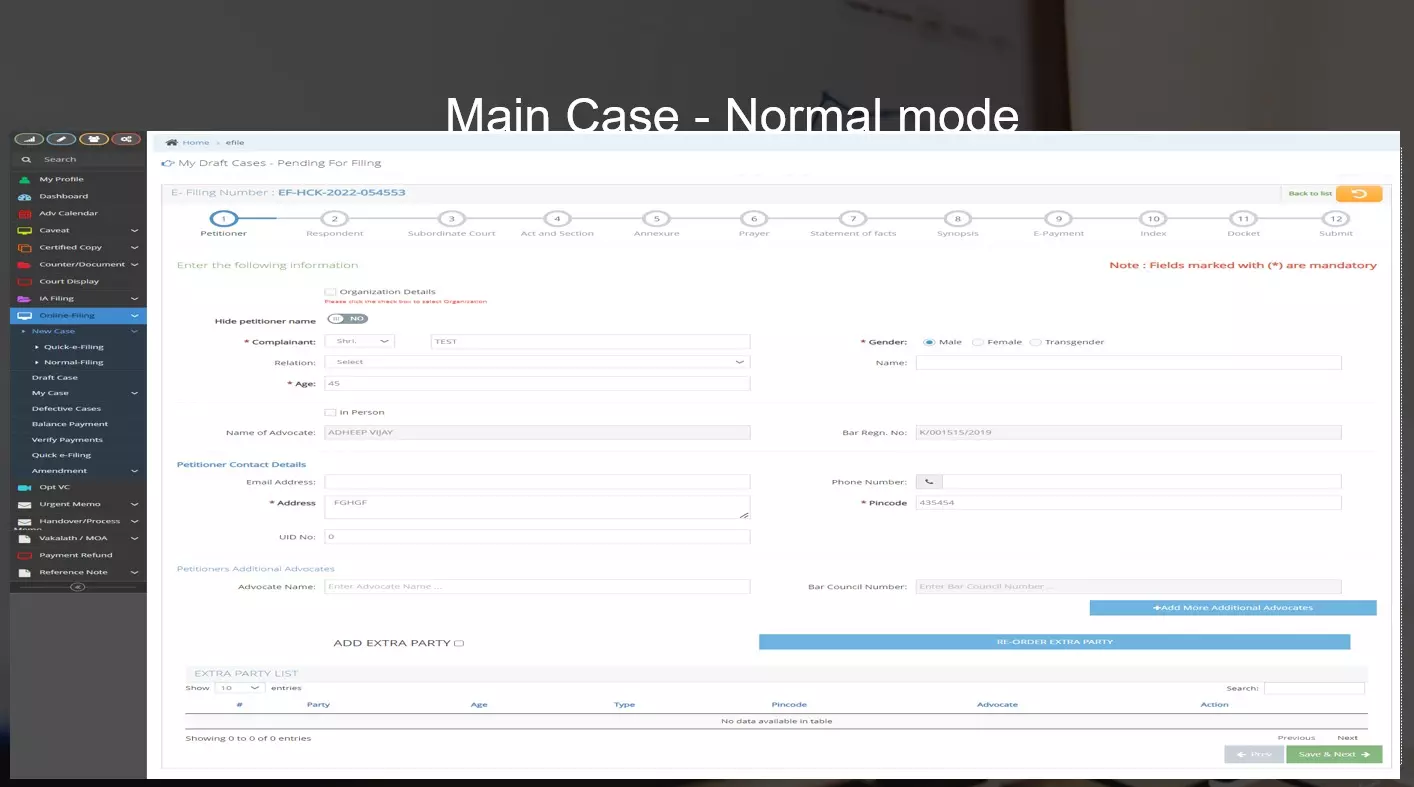
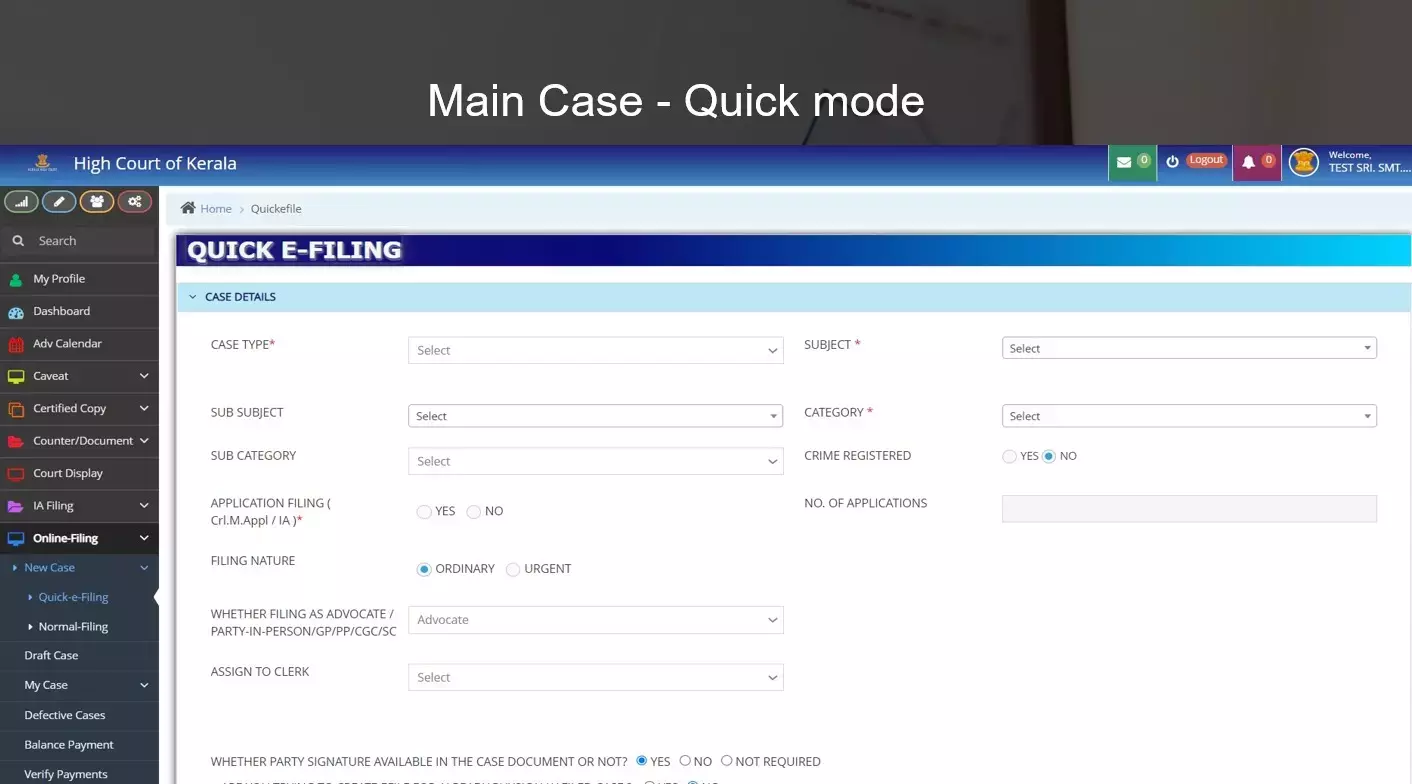
The docket, bookmarks, the case file header and footer are all system generated. It also automatically numbers the pages, and docket, thus bringing uniformity, and providing a much-awaited solution to the cumbersome task of manually numbering large documents. The causelist for admission, hearing and urgent memo is also auto-generated.
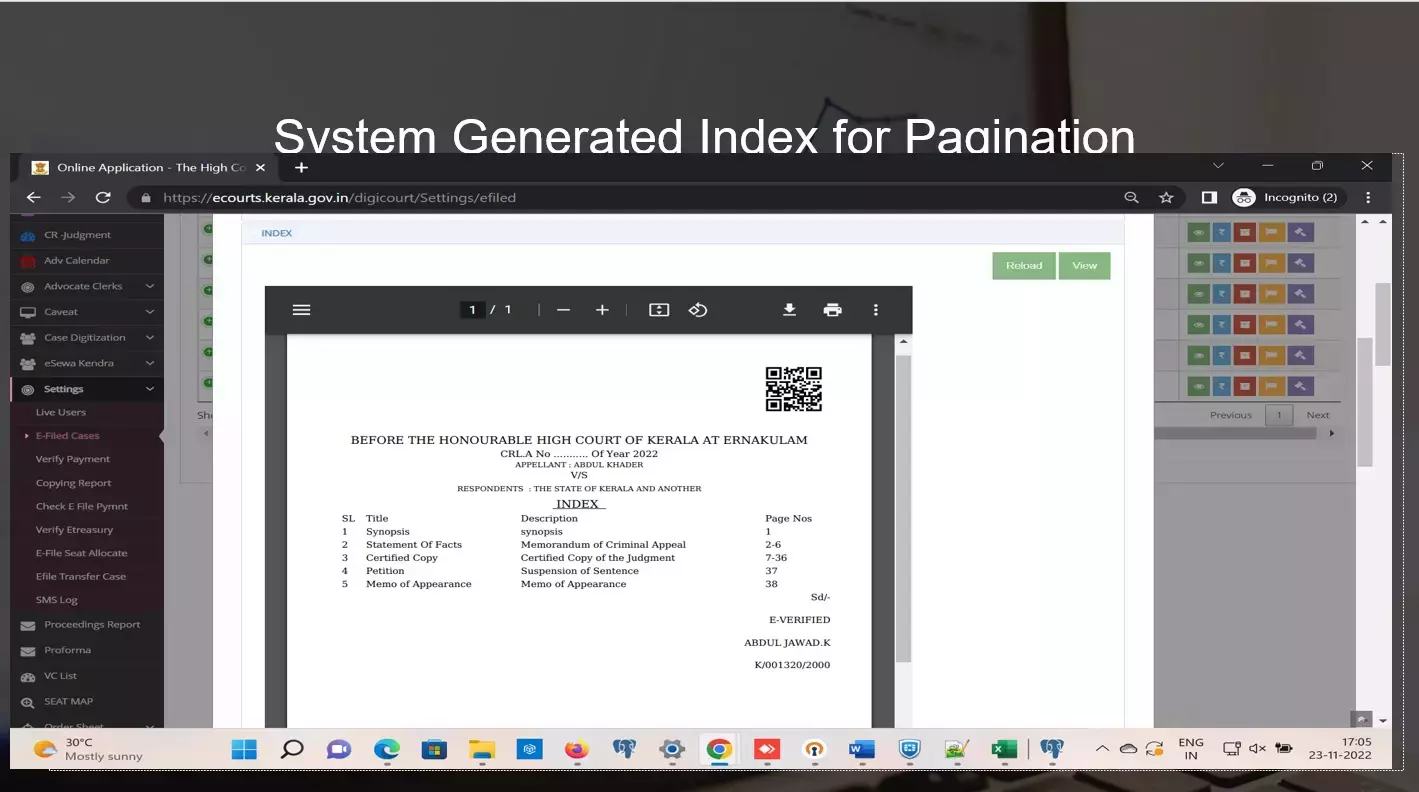
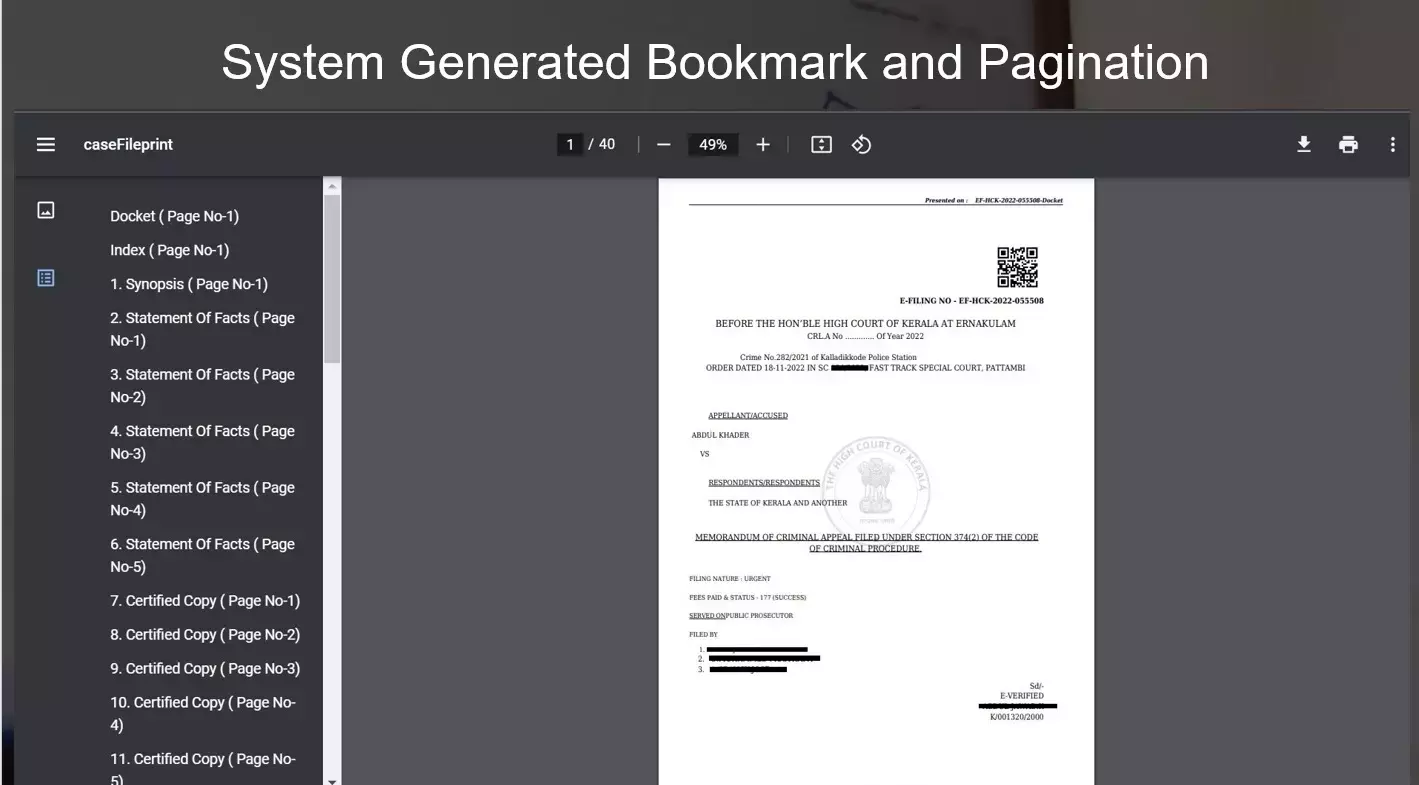
The server converts the documents into OCR (Optical Character Recognition) format, making it easily searchable. This helps parties to easily peruse through large files.
One of the unique features is that lawyers can view all the records that have been presented by them or the opposite side, and take printouts, if necessary. Lawyers can opt for either video conferencing, or hybrid or offline mode for rendering appearance in their cases, thereby giving them flexibility in that regard.
The High Court had initiated real time scrutiny of e-files from 8AM to 8PM since January 1, 2023. For this purpose, three batches of Filing Scrutiny Officers (FSOs) having 6 hours each have been deployed. In fact, a significant aspect of the system has been that lawyers can cure the defects after real time chat with the FSOs. FSOs also have the flexibility to work from home. The system also indicates the number of files that have been scrutinized by an FSO, and the number of files pending with them. Once the scrutiny is complete, the Registry shall accept those documents that have the ‘FSO Verified’ stamp.
- For Judges:
The Judges Dashboard allows Judges to view case files in normal, flip, split, and entire case bundle view modes. Judges can also add notes on the dashboard, which they can save for future reference in the specific case. The system also permits voice to text conversion of such notes.
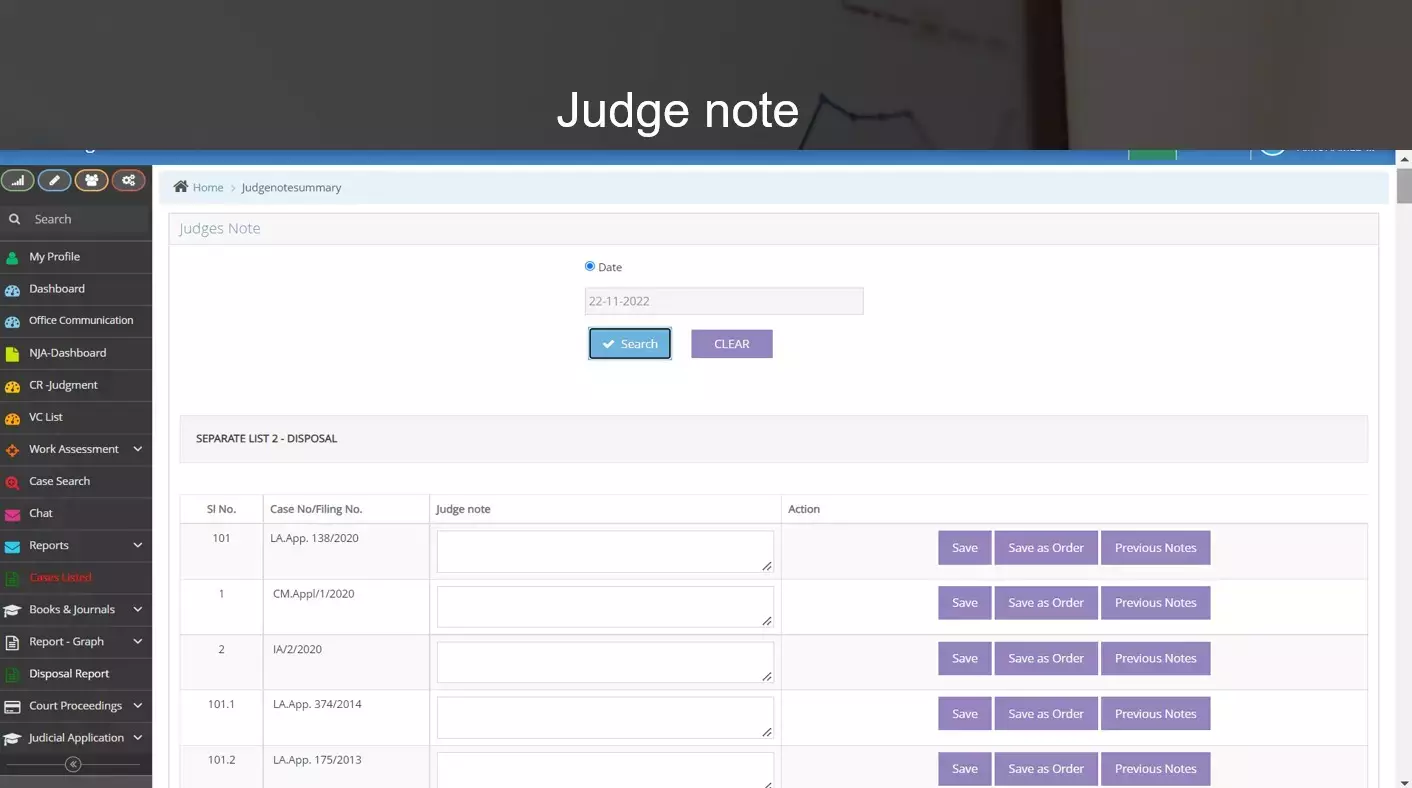
Yet another unique aspect is that the system reveals the case status, as well as a pendency chart that indicates the number of cases that are pending, and the average time that would be required for disposal of the cases.
Much like the Advocates’ Calendar, the judges also have a Calendar indicating the adjourned cases.
The dashboard also shows the work assessment of the staff working under the judge, enabling the latter to keep tabs.
In a significant step, the system grants the Chief Justice of the High Court to have access to the Roster Analysis, enabling the Chief Justice to allocate the cases in the optimal manner, and ensure that the Roster is truly balanced. The Disposal Report of cases is yet another feature that only the Chief Justice would have access to.
The Judges Dashboard further provides for access to online databases, and journals for the judges.
Ensuring complete interoperability, and efficiency, the short orders that are dictated by Judges in court are immediately sent to the Dashboard of the lawyers once it has been signed by the Judges.
The CMS permits applications for online certified copies, which would be sent via dashboard and email. All Judgments and ‘Certified for Reporting’ (CR) Interim Orders are also provided with a neutral citation number.
“Additionally, the CR marked judgments and orders are automatically delivered to journals such as SCC and others,” Deputy Registrar (IT) Joseph Rajesh said.
Virtual Courtrooms
The Courtrooms are also equipped with all-in-one touchscreen PCs, one each for both sides, as well as for the Judge. During hearings, the entire case history of each case, such as the pleadings, and previous orders becomes accessible to each of the parties. All of this ensures that the functioning of virtual/hybrid mode of hearings occur in a seamless manner. These PCs are also provided with internet access. This interoperability is a unique aspect of Kerala High Court’s paperless system, and enables parties to view each other’s files.
Courts have the option of using the platform of their choice for virtual hearings. Apart from ‘Zoom’ and ‘Google Meet’, several courts have adopted the V-consol software for this purpose. This software has also been selected by the Government of India for its official purposes. The 'Vconsol' software has customized features for court-hearings. It provides separate log-ins for judges, advocates, court-masters and members of public. A notable feature is that the advocates get automatic entry to the VC hearing as soon as their case numbers are called. There is an option for judges of the bench to have private chat between themselves. Another striking feature is the 'hand-raise' option given for advocates, which can function as a 'virtual mention' facility. If an advocate attending the VC session wants to make a mention, the 'hand raise' icon can be clicked to invite the attention of the bench. Members of general public can also log-in the VC hearing as passive participants to watch the proceedings of cases for which public access has been allowed. The software also automatically displays the item number of the ongoing case, as opposed to the court officer manually changing the display board for hearings on ‘Zoom’ or ‘Meet’.
Ensuring the Security of the Database
The e-filing application and its database are hosted in the Kerala State Data Centre, that is managed by the Kerala State IT Mission (KSITM) under the Department of Electronics and Information Technology, Government of Kerala, in a cloud environment. The data centre is an ISO high secured infrastructure, having two locations, namely, SDC2 where the application is hosted in a dedicated server, and SDC1 where the replication happens to the dedicated server.
In order to ensure security of the system, it is seen that high availability/ redundancy/ disaster location has been set up in both data centres. In case of one server going down, or there occuring a loss of data or fire, the second location would be up. Apart from this, the State Data Centre also makes tape backup systems for the applications.
The backup system has also been configured to the High Court server room. Daily and weekly backups are scheduled for the High Court server infrastructure, and would be available in a dedicated server in the High Court, thus ensuring the safety and security of the application and database.
The application boasts of Mirox-CERT-In (Indian Computer Emergency Response Team) Empanelled Security Auditor. The Computer Emergency Response Team-Kerala (CERT-K), an organization under the KSITM, and which is also the nodal agency to deal with cybersecurity threats, does periodic auditing of High Court in house applications.
A web-application firewall has also been installed to ensure the safety of the application.
E-Sewa Kendras: A Path-Breaking Concept
“Provided there is internet connection, even in case of a pandemic situation, the justice system would not be hampered”, a source tells us.
So what if a lawyer or a party in person does not have an internet access or lacks a computer device?
It seems the Kerala High Court’s vision has covered such eventualities as well. Such persons can simply take a visit to the High Court where they shall be provided with the devices as well as internet access. Apart from the same, the High Court also has in place an efficient e-Sewa Kendra with 7 manned counters providing assistance. There is also a separate booth for the disabled and for women.
Terming the e-Sewa Kendras as a ‘path breaking concept’ that had first been introduced by the CJI, the Deputy Registrar (IT), Mr. Rajesh said it is a success, particularly for the junior lawyers, litigants, and Parties in person, as help would be provided at the very first point. On an average, 2500 people are availing the services of the e-Sewa Kendras per month, he informed us.
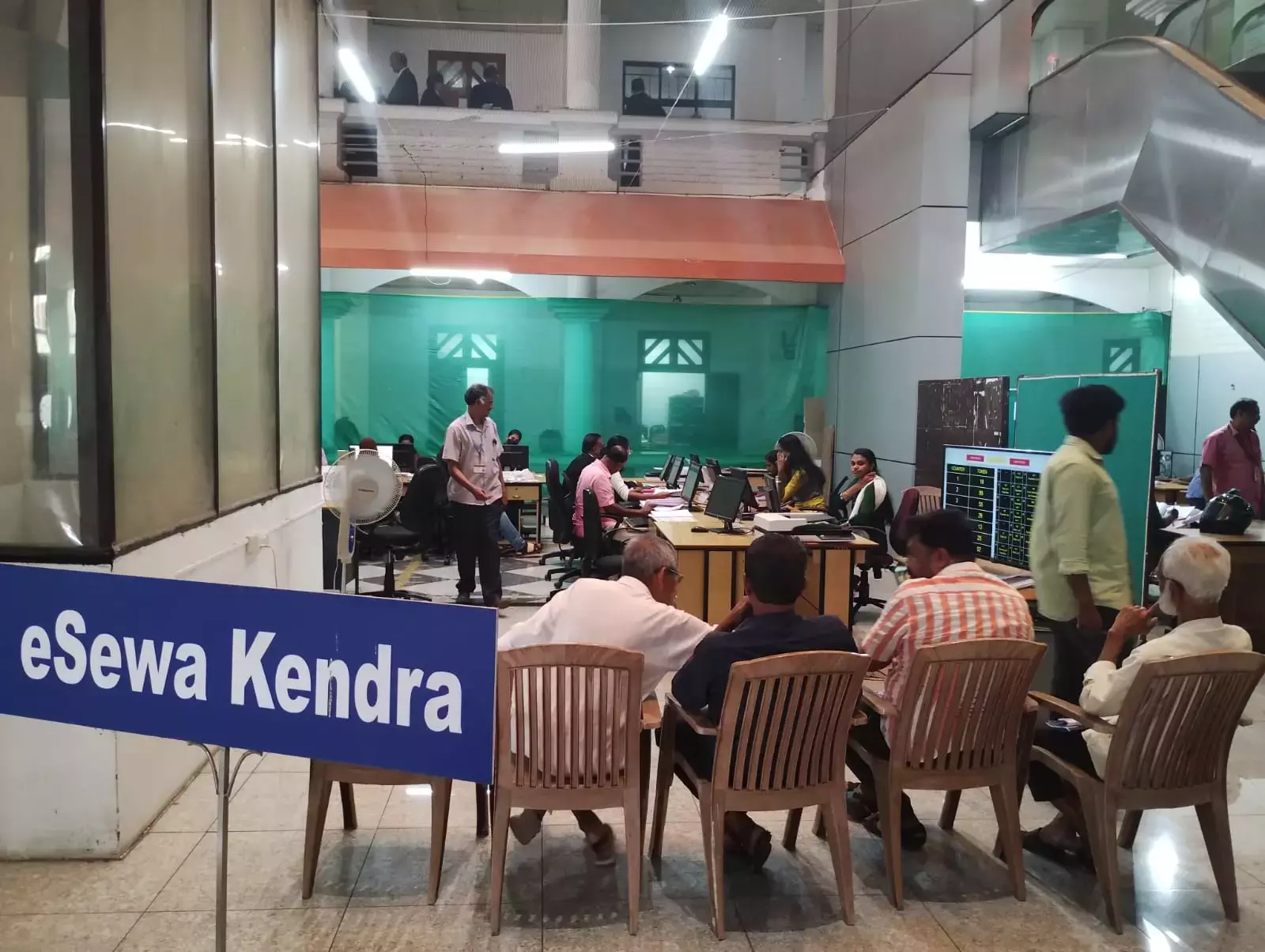
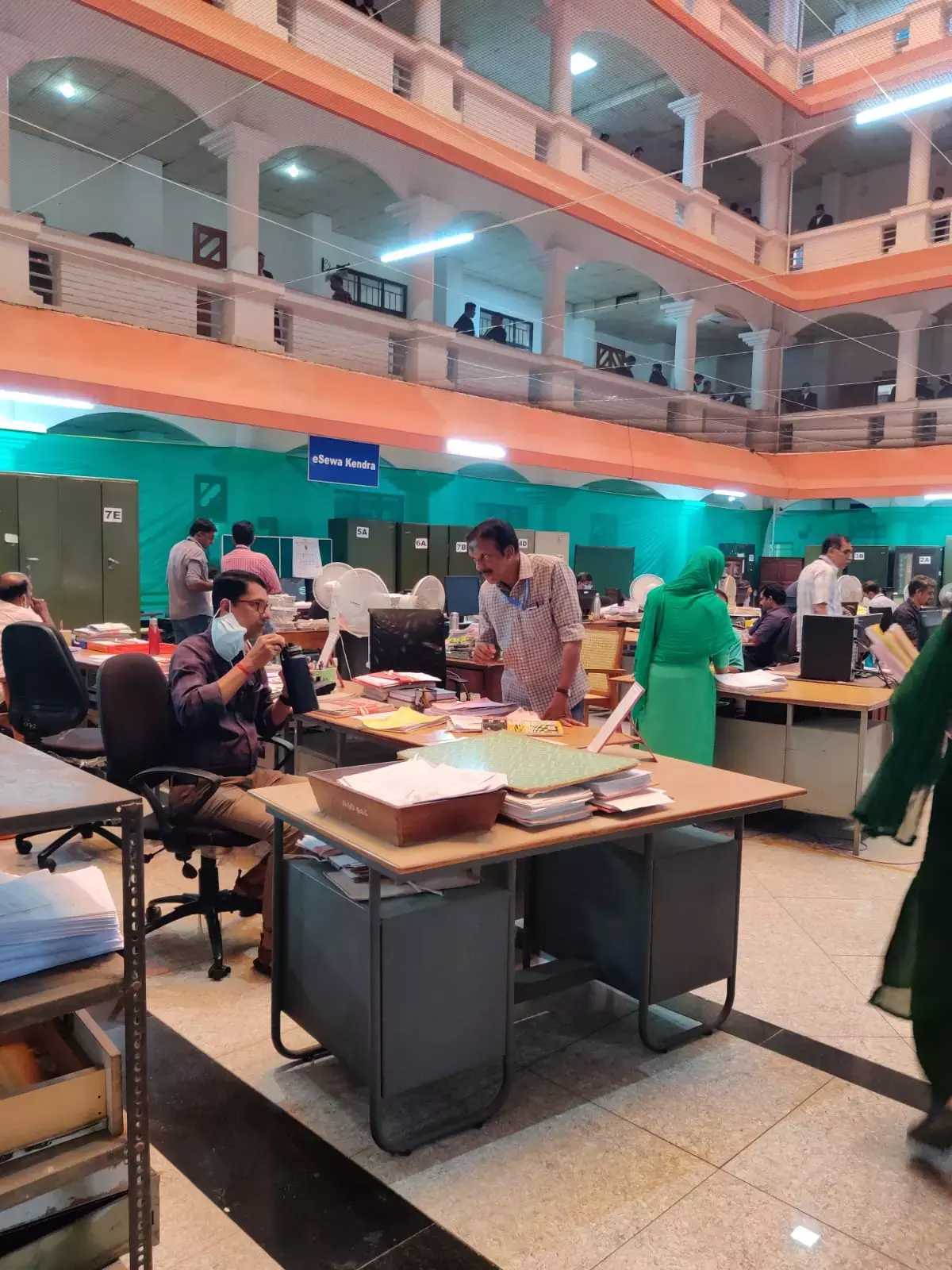
Integrating and Interconnecting the Various Stakeholders
One of the most outstanding features of this novel concept by the Kerala High Court has been the integration between the different stakeholders in a seamless manner. This can be elucidated with the help of an example.
When a bail application is filed, the copy of the same is immediately served on the Public Prosecutor and the Advocate General’s Office. Instruction regarding the bail is also immediately sent to the police station where the crime has been registered. This allows the Station House Officer to transmit the police records online to the office of the Advocate General and to file objections, if any. Once the bail order has been issued by the High Court, there is immediate delivery of the same to the lower court, the Public Prosecutor, the police station and the concerned jail authorities. This ensures that there is no delay in the release of the accused and it has given a new meaning to ‘speedy delivery of justice’. Since a hybrid mode has been adopted, a person from any remote locality can apply for bail, greatly increasing accessibility to justice.One of the most pertinent issues that has often plagued the justice delivery mechanism has been the service of notice. With the integration of post office into this mechanism, this issue too has found a plausible solution.
How these stakeholders were incentivized, and what prompted them to become integral aspects of this system shall be explored in the subsequent feature.

![Revolutionizing Justice- Exploring Kerala High Courts Innovative, Paperless E-Court System For More Accessible Justice [PART-1] Revolutionizing Justice- Exploring Kerala High Courts Innovative, Paperless E-Court System For More Accessible Justice [PART-1]](https://www.livelaw.in/h-upload/2023/03/03/750x450_461780-vc-hearing-and-kerala-hc.webp)